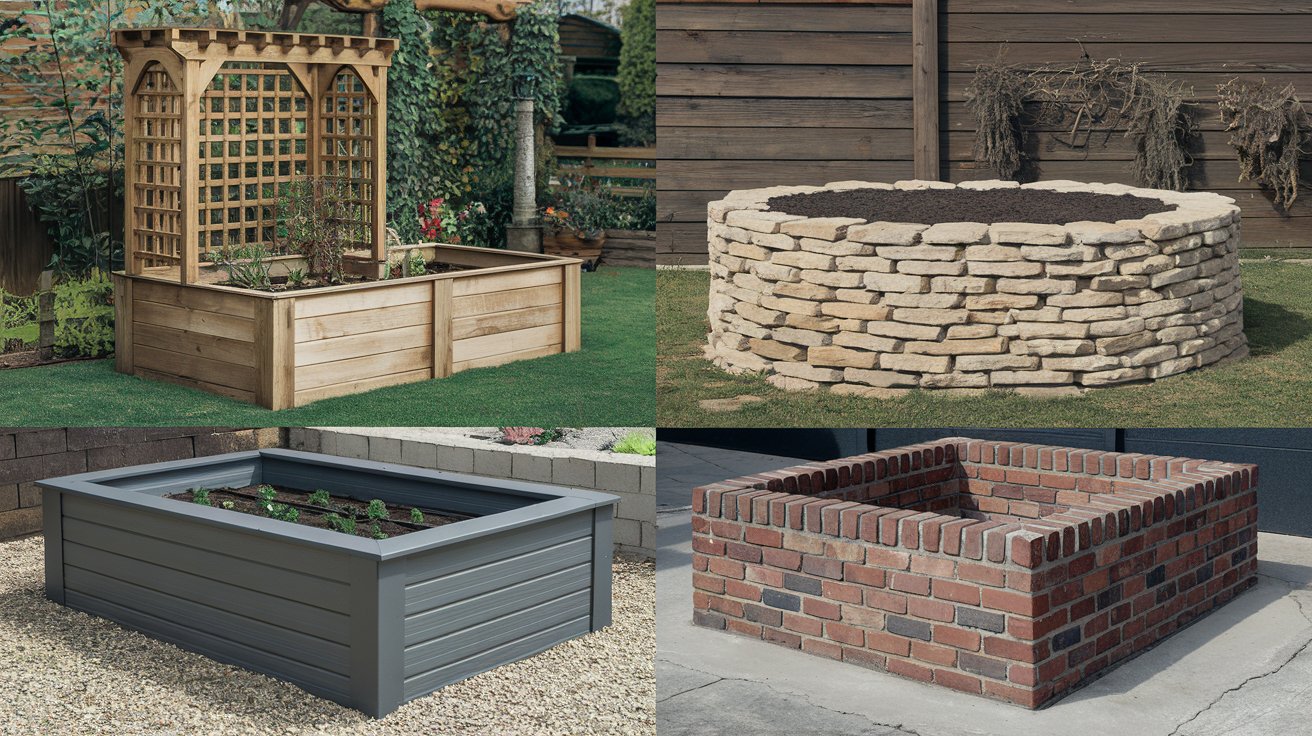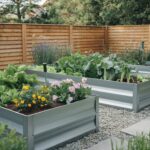Raised Garden Bed Material: Choosing the right material for your raised garden beds is one of the most crucial decisions you’ll make as a gardener. The material you select will affect everything from the longevity of your beds to the health of your plants. With more than 20 years of gardening experience, I’ll walk you through the various materials available, their pros and cons, and how to choose the best one for your garden.
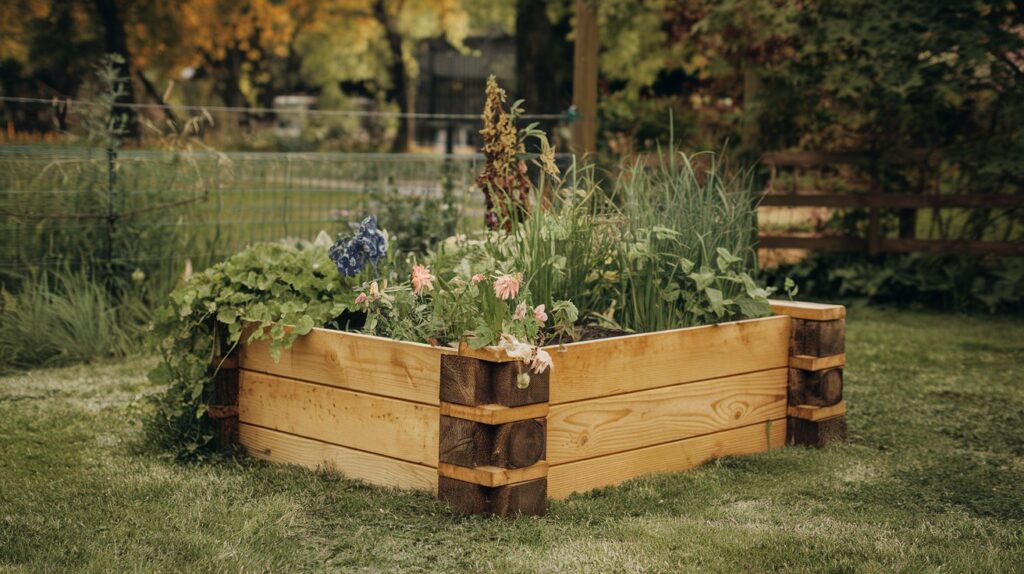
Table of Contents
1. Wooden Raised Garden Beds
Types of Wood
Wood is a classic choice for raised garden beds, primarily due to its availability and aesthetic appeal. However, not all types of wood are created equal.
- Cedar: Known for its natural resistance to rot and pests, cedar is an excellent option for raised beds. It’s lightweight, easy to work with, and can last 10-20 years without significant deterioration.
- Redwood: Similar to cedar, redwood is naturally resistant to rot and has a beautiful appearance. It tends to be more expensive but can last longer.
- Pine: While pine is often more affordable, it is less durable and can rot within 5-10 years. If you opt for pine, consider using treated wood or lining the interior to extend its lifespan.
Pros and Cons
- Pros: Aesthetically pleasing, easy to work with, and relatively inexpensive (especially with pine).
- Cons: Can rot or warp over time (unless using treated wood), requires maintenance like sealing or staining, and may not last as long as other materials.
2. Metal Raised Garden Beds
Types of Metal
Metal raised beds, particularly those made from galvanized steel, are becoming increasingly popular. They offer a modern look and excellent durability.
- Galvanized Steel: These beds are resistant to rust due to their zinc coating and can last decades. They are lightweight and easy to assemble, making them a popular choice among gardeners.
- Corten Steel: Known for its weathered appearance, corten steel develops a rust-like finish that protects it from further corrosion. It’s sturdy and can also last for decades.
Pros and Cons
- Pros: Long-lasting, low maintenance, modern appearance, and often resistant to pests.
- Cons: Can heat up quickly in hot climates, higher initial cost compared to wood, and potential for rust if the coating wears down.
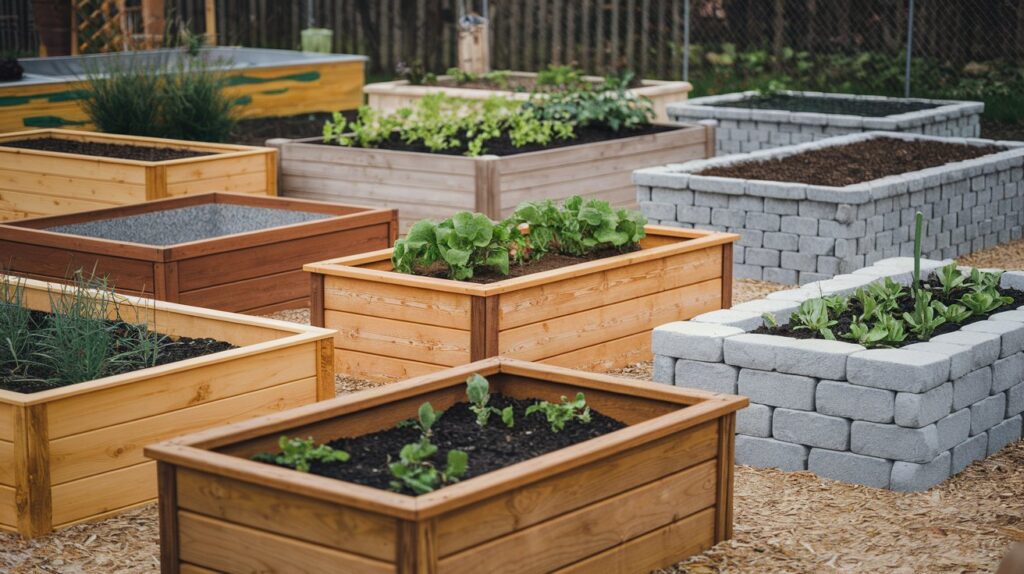
3. Composite Materials
Composite raised beds are made from a blend of recycled plastic and wood fibers. These materials offer the aesthetic of wood with increased durability.
Benefits
- Durability: Composite materials do not rot, warp, or crack, making them a long-lasting option.
- Low Maintenance: They require little to no maintenance compared to wooden beds.
Drawbacks
- Cost: Composite beds can be more expensive upfront than traditional wood.
- Environmental Concerns: Depending on the manufacturer, some composite materials may include plastics that are not biodegradable.
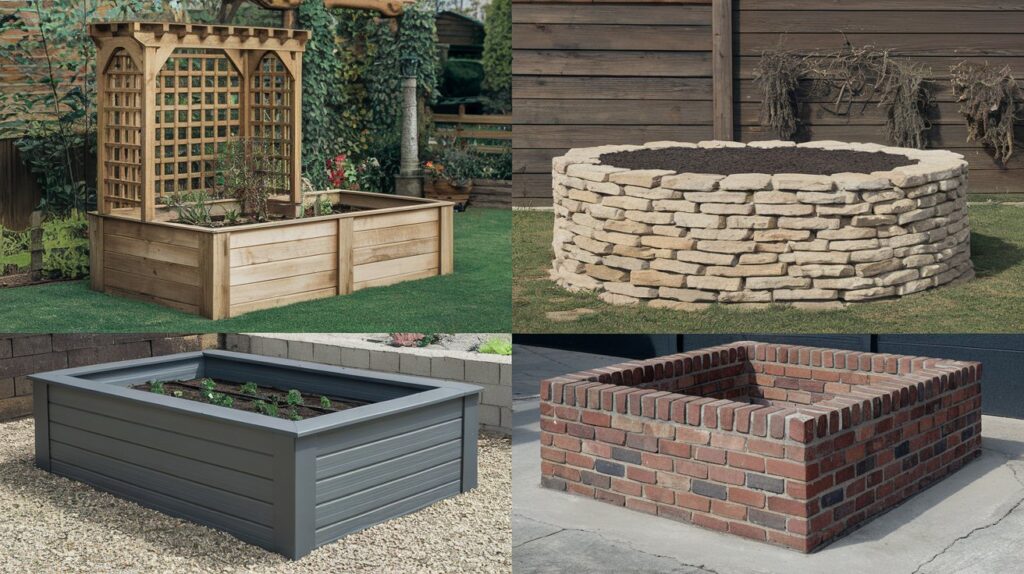
4. Stone and Brick Raised Beds
Using stone or brick for raised beds can create a beautiful and permanent structure in your garden.
Benefits
- Aesthetics: Natural stone and brick offer an attractive, classic look that can enhance your garden’s appeal.
- Longevity: These materials are highly durable and can last for many years without needing replacement.
Drawbacks
- Labor-Intensive: Building with stone or brick requires more time, skill, and effort than simpler materials.
- Cost: The initial investment can be higher compared to wood or metal.
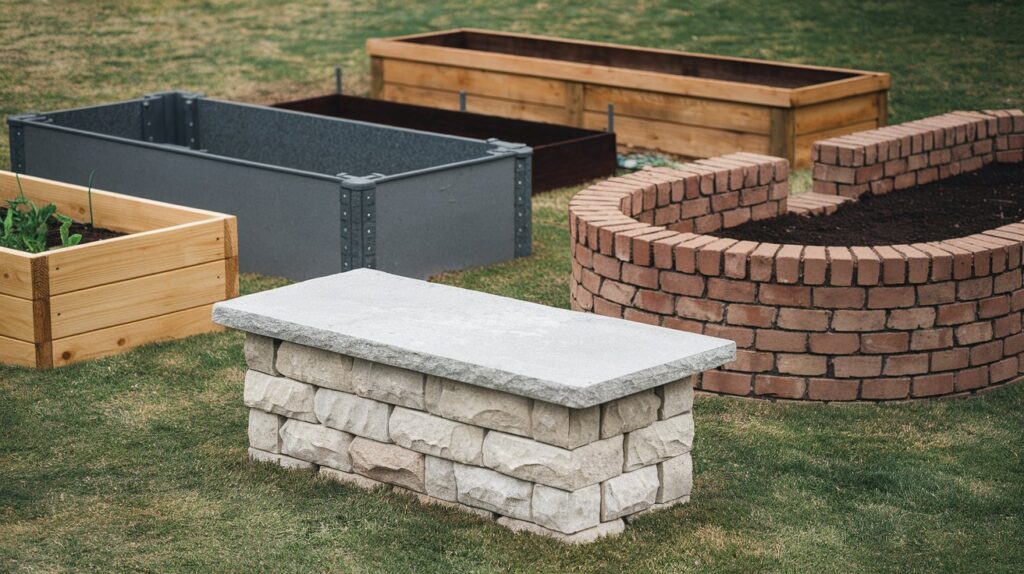
5. Choosing the Right Material for Your Garden
Consider Your Budget
Your budget will play a significant role in your choice of material. While wood might seem cheaper initially, consider the long-term costs related to maintenance and replacement.
Evaluate Your Climate
Consider the climate in your area. If you live in a hot region, metal beds might overheat, while wooden beds may require more maintenance in wet climates.
Think About Aesthetics
Your personal style and the overall design of your garden should also influence your decision. If you prefer a rustic look, wood might be more appealing, while those looking for a modern garden might prefer metal.
Consider Plant Types
Different materials can affect plant health, especially in terms of soil temperature and drainage. For example, metal beds can retain heat, benefiting heat-loving plants, while wood may provide better insulation for cooler-season crops.
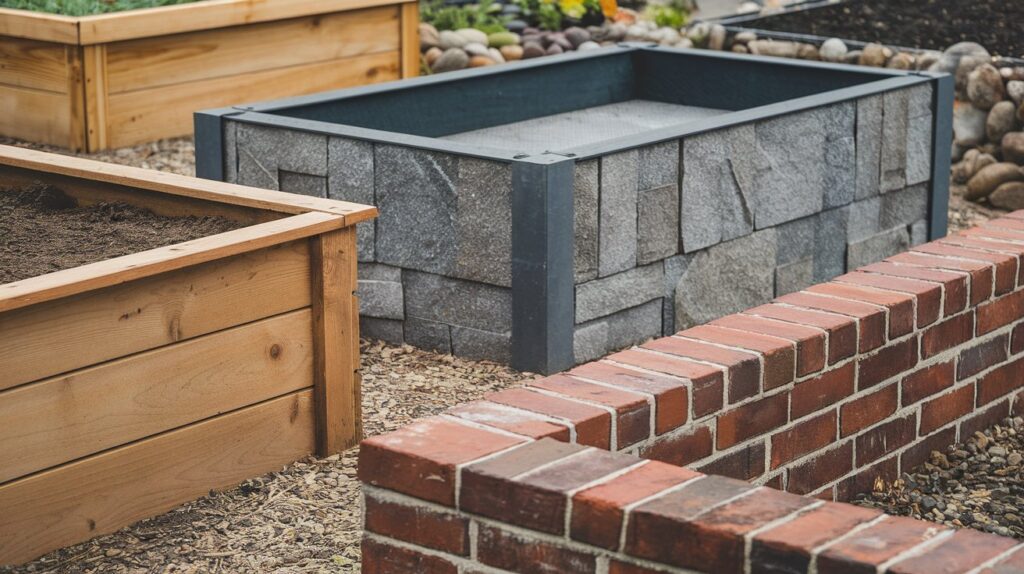
6. Final Thoughts
Choosing the right material for your raised garden beds is essential for the success of your gardening endeavors. By considering factors such as durability, cost, aesthetics, and climate, you can make an informed decision that will benefit your garden for years to come.
Whether you opt for the classic look of wood, the durability of metal, or the permanence of stone, selecting the right material will help create a thriving environment for your plants.

